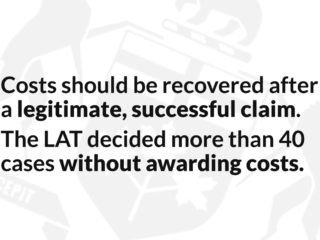In Morris, the Plaintiffs succeeded on a voir dire in excluding the evidence of a biased defence life care expert at trial.
The Court held that the defence expert was not properly qualified, independent, impartial and unbiased, failing to meet the fourth admissibility requirement of the Mohan criteria. [1] From the outset, the expert took on the role of advocate for the Defendant’s position and was unable to provide fair, objective evidence. The expert’s evidence was thus inadmissible.
The Court emphasized that while this finding did not equate to any bad faith or intentional misconduct by the expert, the evidence demonstrated that his efforts were “regrettably misguided”[2]:
- Overstepping and aligning with the instructing Defendant from the outset of the retainer;
- Formally retained as a certified life care planner to provide his opinion as to the injured Plaintiff’s future care needs but provided “unsolicited opinions” with respect to future vocational capabilities and income losses that aligned with the Defendant’s position.
- Relying entirely on reports, interviews and assessments conducted by others, rather than meeting with the injured Plaintiff to conduct his own independent assessment;
- Highlighting only information that downplayed the Plaintiff’s injuries and abilities.
- Testifying that his rebuttal reports were prepared solely to correct typographical errors in his first report, denying he’d made any substantive changes. He had in fact made substantive changes as to whether the plaintiff’s safety required ongoing PSW support. When the instructing Defendant brought a correction of the evidence to his attention, the expert disregarded his previous opinion (which aligned with the Plaintiffs’ position), instead using this same evidence to alter his opinion to align with the Defendant’s position; an “obvious bias” in favour of his own client [3].
The Court noted that expert witnesses have a special duty to the court to provide fair, objective and nonpartisan assistance. If they cannot comply with this duty, they should not be permitted to testify. Such independence and impartiality are one of the basic standards for admissibility of expert evidence. [4]
By drawing attention to only those facts favourable to the position of the party who retained him, the expert shrouded himself in a “cloak of bias”. [5] He had a responsibility to provide his opinion as to the realistic future needs of the Plaintiff. Significantly, his certifications were “grandfathered”, based not on any formal education or training but on his life experiences.
Finally, the Court found that the expert failed the “acid test” in White Burgess as to whether the expert would have given the same opinion had he been retained by the Plaintiffs [6]. Justice Mitchell was not confident that he would have. Finding that the expert failed to meet the Mohan admissibility criteria, the Court declared the defence expert evidence inadmissible.
[1] R. v. Mohan [1994] 2 S.C.R. 9 [2] Morris at para 17; [3] Morris at para 27; [4] White Burgess Langille Inman v. Abbott and Haliburton Co., 2015 SCC 23 at para 34; Morris at 13; [5] Morris at para 22; [6] White Burgess at para 32. ; Morris at paras 15 and 28













